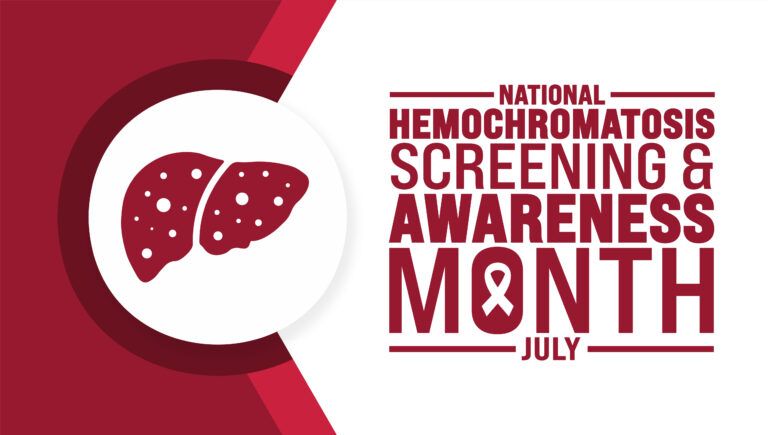July 2024 – National Hemochromatosis Awareness Month

What is Hemochromatosis?
Hemochromatosis is a genetic disorder characterized by the body’s inability to regulate iron absorption properly. Normally, the body absorbs only the required amount of iron from the food we eat, but individuals with hemochromatosis absorb much more than they need. This surplus iron accumulates in various organs, particularly the liver, heart, and pancreas. Over time, the excess iron damages these vital organs, leading to serious health complications.
Who is Affected by Hemochromatosis?
Hemochromatosis is more common than you might think, with significant variations in its prevalence among different populations. Studies suggest that it primarily affects individuals of Northern European descent, including those of Irish, British, and Scandinavian backgrounds. It is estimated that about 1 in 200 people in these populations have inherited the genetic mutations responsible for hemochromatosis. However, it is essential to note that the condition can affect individuals of any ethnicity.
Treating Hemochromatosis
Hemochromatosis is a manageable condition with early detection and appropriate treatment. The most common and effective treatment for hemochromatosis is phlebotomy, a process similar to blood donation. Regular phlebotomy sessions help remove excess iron from the body, reducing the risk of organ damage. In some cases, when phlebotomy may not be suitable, iron-chelating medications can be prescribed to lower iron levels.
It is vital for individuals diagnosed with hemochromatosis to work closely with their healthcare providers to develop a personalized treatment plan that suits their specific needs and health status.
To learn more please click here.

